Screen time is a complicated topic for anyone trying to teach or raise a child today.
Technology is evolving so fast that we have no personal experience, advice from our mothers nor data on long term consequences to easily distinguish what’s right and wrong for our kids.
As the creator of a children’s app, I struggle with issue constantly. Am I a hypocrite for having my kindergarten students use my handwriting & phonics app during literacy centers, yet I don’t let my daughter near an iPad?
Perhaps, but I believe the issue has varying shades of gray. I think it’s naive to say that all technology and screen time is bad for kids – especially considering how rapidly things are changing – but at the same time I do think there is reason to be cautious.
How can we figure out what tech is good or bad? What will help our children learn?
Today I’m going to explore this tricky topic to hopefully give you some insight into how to make the best decision for your family, your kids and your students.
I look forward to sharing with you:
- Why I decided to create a children’s app
- The current research behind limiting screen time for kids
- How tech can enhance kids’ learning & quality of life
- My personal guidelines on screen time at home
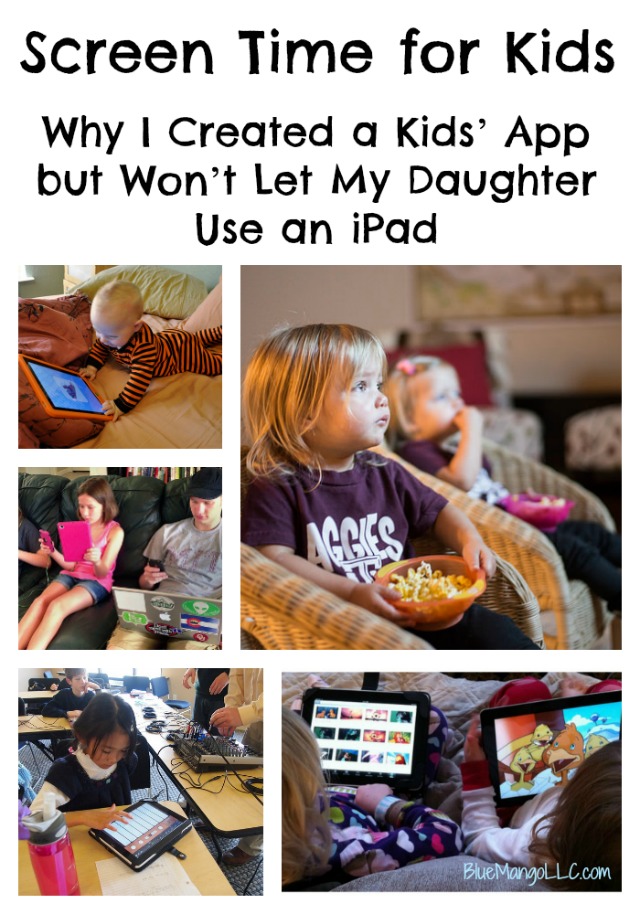
Why I decided to create a children’s app
My experience as an early childhood specialist and a mother, as well as my personal beliefs, have led me to value under-scheduling, experiences in nature, physical activity and unstructured open-ended play that fosters creativity, curiosity and problem solving skills.
This tends to put me in an anti-technology camp, so what changed?

One day I realized I couldn’t fight the future. iPads were here and kids were using them. If students were going to spend 15 minutes in the car anyway playing on an iPad, why not have them work on skills that they really needed?
I also began to notice so many children were being referred to OT just to learn handwriting. In addition, I wanted to give my students who were showing signs of language disabilities and dyslexia the additional practice at home to learn their phonics sounds and letter formation – without expensive therapy.
Ollie’s Handwriting & Phonics was a way to bring an affordable tutor into the home. Based on research and using multi-sensory techniques, the app teaches children how to form letters correctly (and won’t allow them to practice bad habits) and reinforces phonics sounds.
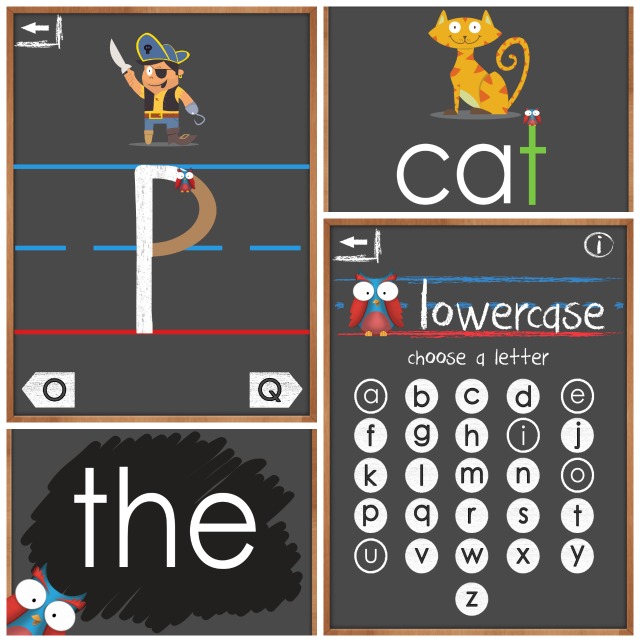
It’s meant to be a teaching app, not a game and I was actually nervous that the app would not be super fun and appealing to children because of all the fast-paced, colorful and noisy games out there now for the iPad.
However, to my delight it’s been very successful – popular with school districts and special education teachers. I think Ollie’s Handwriting & Phonics app is a valuable tool for many students.
However, it is just that – a tool.
It does not replace the unstructured outdoor free play that is necessary to build the core, upper body strength and finger dexterity to develop strong fine motor skills. Just 5 to 10 minutes a day would be hugely beneficial to a child with dyslexia or dysgraphia.
Is screen time for kids that bad?
So what does the current research on screen time say? According to the American Academy of Pediatrics (AAP) children under age 2 should have no screen time at all and kids as well as teens should be limited to 1 – 2 hours of screen time a day – and this should be high-quality content.
Studies have shown that excessive media use can lead to attention problems, school difficulties, sleep and eating disorders, and obesity. – AAP
The AAP’s reasoning behind no screen time for infants and toddlers under 2 is that their brains are developing so rapidly that they learn best from interacting with people and not screens. Screen time replaces valuable learning time.
The AAP suggests that parents do not allow screens in children’s bedrooms, turn the TV off during dinner and try to be present with their child when engaging in media to help guide their experience.
So why should we take these recommendations seriously? Is 20 minutes a day of PBS’s Daniel Tiger really harming an 18 month old?
What does the research say?
The topic of screen time for kids is a lot more complex today than when it was first researched 15 years ago. The AAP’s original recommendations came out in 1999, well before an interactive tablet like the iPad was brought to the market in 2010.
When examining the research, I was careful to look at when studies were conducted (pre or post iPad), the age of the children in the study (screen time seems to have different effects on kids under 3) and the type of screen time engaged in (passive TV watching, movies, video games or interactive tablets).
The simple answer is – it’s complicated.
However, I compiled my findings here to help you understand my decisions around screen time as a mom and an early childhood educator and to help you make the best decision for your students and family.
Screen time affects attention & executive function
There is no evidence showing that screen time is educational for infants and toddlers, but there is some evidence that it may be harmful.
Children over age 3, however, can benefit from a limited amount of carefully monitored screen time experience with quality content, but excessive screen time harms healthy growth and development, regardless of content. (2012)
I wasn’t interested in unfounded claims that screen time causes ADHD (or obesity) – that oversimplifies things. However, TV viewing and playing video games do seem to have an effect on children’s attention, behavior and executive functioning skills.
TV viewing for very young children has been linked to attention problems.
In this study (2004), watching TV at a young age (1-3 year olds) was associated with attention problems at age 7 and was directly related to how many hours a day the child watched. Another study (2007) showed that viewing violent or noneducational, nonviolent TV shows (or movies) under the age of 3 was also linked to attention problems.
Screen time also has an effect on older children.
The amount of time watching TV as well as playing video games were both associated with increased attention problems in children. Kids who exceeded the AAP’s recommendation of 2 hours of screen time a day were twice as likely to have attention problems. (2010)
Children who spent more time using computers or watching TV had more behavior problems regardless of their level of physical activity. (2010)
Perhaps most concerning to me is a study (2011) that showed that viewing fast-paced cartoons, whether educational or not, significantly impaired 4 year olds’ executive functioning skills.
Screen time replaces other activities necessary for healthy growth & development
While these above studies are all slightly scary to me, I’m most concerned about the activities screen time often replaces – unstructured outdoor and imaginative play and human interactions.
Children benefit most from having a lot of time for hands-on creative and active play, time in nature, and face-to-face interactions with caring adults. (2012)
Kids today spend an average of 7.5 hours outside of school on a screen. (2010) What time does that leave for anything else?
Developing fine motor skills & imaginative play
Unstructured outdoor free play is essential for the proper development of gross & fine motor skills and ultimately handwriting. My research and interviews with experts emphasized this point time and time again in my 3 part series on The Unconventional Guide to Improving Handwriting Skills.
Set aside the electronics – the tablets, smart phones, video game systems, and remote controls. Just because they use the hands doesn’t mean they develop the hands. – Christie Kiley, pediatric OT, founder of Mama OT
Pediatric occupational therapists are seeing an increase in the amount of children today who lack the core strength, upper body strength and finger dexterity necessary for the proper development of their fine motor skills.
Their recommendations? Let kids spend more time in unstructured play outdoors.

The more time children spend watching TV, the less time they spend in creative play. Whether indoors or out, open-ended imaginative play is important for learning.
Kids need time to be curious and direct their own play by pretending, physically manipulating objects, experimenting and tinkering to figure out how things work.
Rachel Coley, pediatric OT and founder of CanDo Kiddo talks about the importance of unstructured play.
I personally emphasize “old school” backyard play and unstructured social play outside at early ages because they offer self-directed exploration through movement, foster curiosity and imagination, and promote social problem-solving – all key developmental tasks of the early years.
The ability of a child to turn a ball, a hula hoop, a rope and a cardboard box into an elaborate pirate ship or make up their own tossing game is a skill called ideation. It’s often overlooked but is very important to motor and cognitive development.
Communicating, connecting & interacting in person
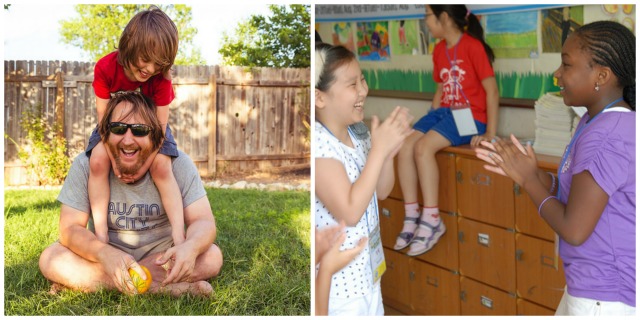
Children learn best from real human interactions. Infants begin social learning from the moment they’re born through face-to-face interactions with parents and caregivers. Preschoolers and elementary students hone these skills as they negotiate conflicts in play and collaborate in groups to solve problems.
Even middle schoolers have a greater difficulty reading emotions because their screen time use is replacing interacting with real people!
Researchers at UCLA found that 6th graders who were sent to an outdoor education camp for 5 days (with no access to electronic devices) were significantly better at recognizing facial emotions and understanding nonverbal cues than 6th graders who were allowed continual access to their mobile devices and screens.
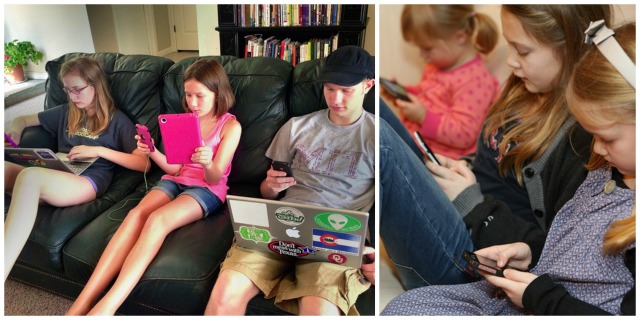
Interestingly, researchers advised educators to be aware that adding more computers and iPads to a classroom may inadvertently be taking away an important piece of social learning that should be going on in the classroom.
Even educational TV has its consequences
Many TV shows, videos and apps boast about educational benefits but there is little evidence to support most of these claims. Just because a company says something is educational, doesn’t mean there is any scientific research to base their claims.
Babies learn language through face to face interactions with their caregivers. If a young child is not interacting live with a person (this could be virtually), they do not gain any new vocabulary.
Children under 4 years old who either started watching TV at less than a year old or watched TV for more than 2 hours a day were 6 times as likely to have language delays than their peers!
So it’s no surprise that “educational” TV and videos marketed for infants and toddlers – like Baby Einstein – don’t do a thing to help kids build language skills.
Also, surprisingly, educational shows (and even well-meaning books like the Bernstein Bears!) can actually increase a type of aggression in children.
Coined “relational aggression” in the book NurtureShock – it’s when kids are manipulative and controlling of their peers such as telling kids they can’t be their friend if they don’t get their way.
The problem with many of these educational shows is that they focus on the problem and negative behaviors for so long that it’s all kids remember. The short wrap up at the end of the show where everyone is forgiven and friends again is forgotten. Children just end up learning new ways to be mean!
These researchers found that after watching an episode of Clifford the Big Red Dog – which focused on a 3-legged dog and was supposed to be about overcoming differences, friendship and kindness – actually resulted in kids being less tolerant!
Needless to say, “educational” is not always the answer.
How tech can enhance kids’ learning & quality of life
I think it’s pretty clear that using screen time as a babysitter, especially for children under 3, is detrimental to their growth and development.
In addition, passive TV or video watching does not seem to be helpful for kids’ learning and can be harmful. Even though children have more access to mobile devices today, television use is still what children engage in most.
However, most of the studies mentioned do not address interactive tablet or smart phone use or intentional computer use such as researching information, Skyping with family (more on this below) or playing creative computer games such as Minecraft – did you know kids can actually learn to code in the game?

“Screen time” prior to 2010 really means just watching TV and video games. What does screen time mean today in 2015 and can we lump all screens together?
More recent studies (from 2011 – 2014) recognize that tech is constantly changing and we don’t need to throw the baby out with the bath water. These studies advise caution around screen time but also emphasize the intentional use of technology for children.
Screen time is best when it’s interactive, has an adult engaging with a child and is of carefully chosen content.
Technology is amazing – just think about how it has positively enhanced the lives of students with special needs! Children with autism can communicate with iPads.
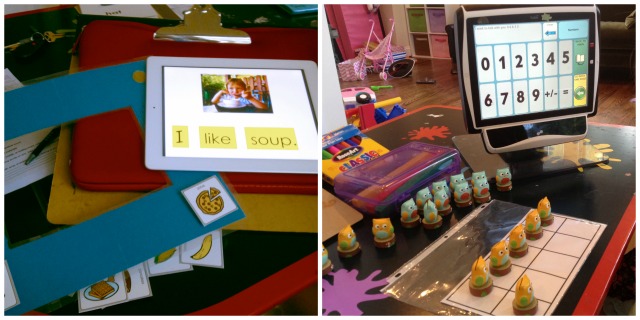
Little girls with Rett syndrome who are unable to speak and have no functional use of their hands are able to use a Tobii (an assistive communication device that reads eye gaze) to talk.
Before these kind of tools, people used to think that girls with Rett were cognitively impaired – I worked with a little girl for over a year and can tell you that is not the case!
In addition, there are also many cool ways to enhance learning in the classroom by using an iPad that build important skills like creativity and problem solving.
My current guidelines with my daughter
I believe there is enough information out there to be cautious with screen time and young kids. I don’t see there is enough evidence that watching TV or videos, even educational ones, is beneficial for the development of young children.
In addition, I see it as replacing higher quality activities that require fine motor skills, critical thinking, creativity, interacting with people and learning from experience. Lastly, there is no research that shows kids who are not exposed to electronic devices before kindergarten are at a disadvantage.
My daughter is currently 21 months and will turn 2 this June 2015. Here are my current guidelines:
1. Absolutely No:
- TV watching – This is an easy one since we don’t have a TV!
- Watching of any videos – YouTube, songs, stories, movies or educational shows
- Playing with the phone or iPad
2. I Limit my time on my phone in front of my daughter.
Kids get their habits from parents. She knows my husband and I work on our computers and often check our phones (texting is addictive) or use them to take pictures.
However, we try to not use them too much in front of her – especially during mealtimes and family outings – mainly because it means we’re engrossed in Facebook instead of interacting with our daughter!
3. FaceTime & Skype are OK in limited amounts.
When you’re in Denver and the rest of your family is in Philadelphia, Boston, Jacksonville, San Francisco, Honolulu and the Netherlands – you can’t discount how amazing it is today to talk live virtually with your family.
I used to feel guilty about this “screen time” but this new study got my really excited and I’m learning to relax a little more as a mom.
I still limit this time because Reagan just gets really irritable. She wants to play with the computer or phone, it gets her all wound up and when we have to end the session she throws a tantrum.
Final thoughts

New research is constantly coming out and the world and the many uses of “screens” is changing fast. While I advise parents to be cautious, I don’t think we can still lump all screen time together and declare it evil. We just don’t know what the future might bring!
An educational iPad app that helps kids with dyslexia or dysgraphia learn their letters and sounds is very different from watching cartoons on TV – I hope you agree!
I look forward to giving an update on this article in the future. I know my views and guidelines may change in a year or even six months as technology, education and our world is constantly changing!
What does screen time mean for you?
My daughter is very young and currently the “only” so it’s easy just to keep her in the dark about a lot of cool things on screens. But I’m curious…
What do your family’s screen time habits look like?
Do you have screen time rules?
How do you use tech in the classroom?
Image credits: Wesley Fryer, Brad Flickinger, Sallie the Cape Lady, Lyn Lomasi, Arwen Abenstern – KWP, Hindrik Sijens, Olga, Lotus Carroll, Lars Ploughman, USAG- Humphreys, Clintus

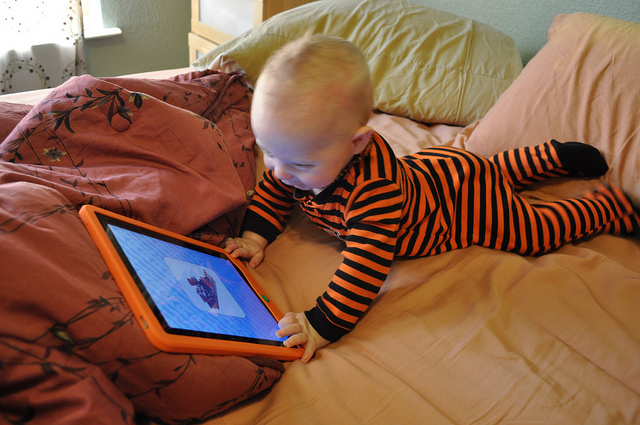
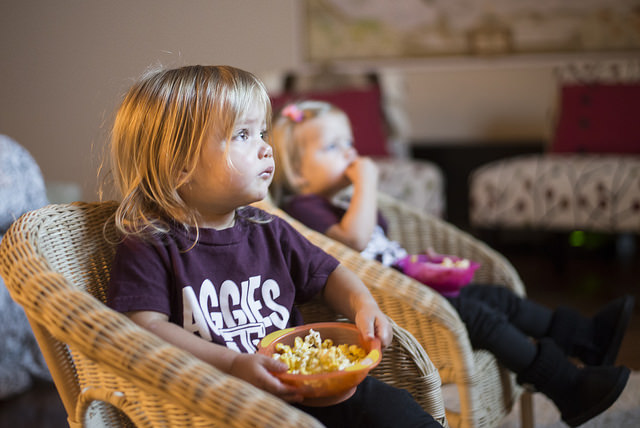
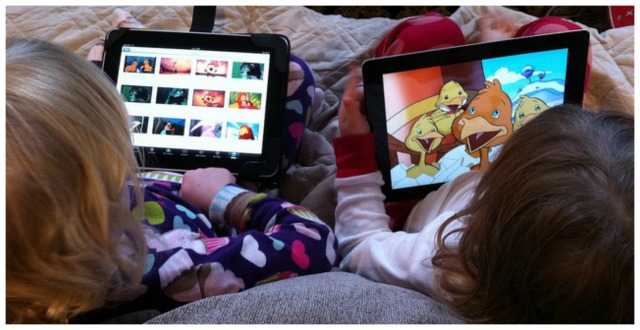
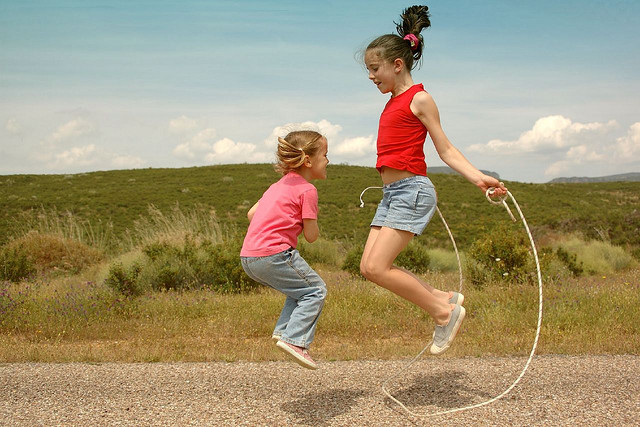
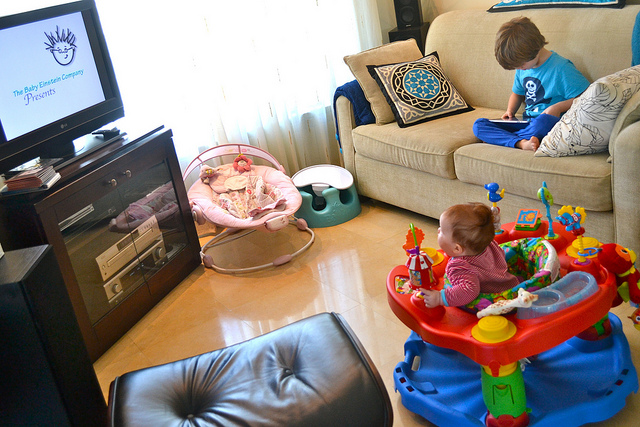
Well, I don’t have children so I cannot ask your first two questions 🙂 As for the third, the use of so-called technology in our school is limited to using a portable projector, showing DVDs and using the internet mainly to show a youtube video related to a specific lesson. All teachers have internet access in their classrooms but half of them do not have a computer!
As always, your post is very interesting. Thank you.
Thanks Liana! It’s always interesting to hear how schools use technology – and how much access they have to it. It seems crazy in 2015 that all teachers don’t even have a computer at your school.
This really puts things into perspective to think some teachers have to worry about the quality and quantity of screen time for their students and others have to worry about about their kids not getting the proper access to technology!